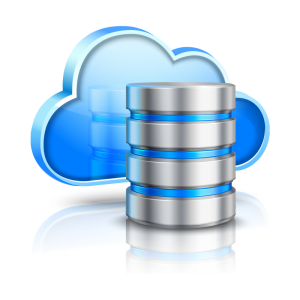
Meet the Oracle NoSQL Database 21.1 EE
The twenty-first century stands for an exceedingly customer-obsessed business paradigm. Today, a successful business is measured upon the extent of participation, personalization, speed, and user-friendliness offered by it (a prerequisite for the Web 2.0 enterprises, especially), while having consistently metamorphosed to meet the new and upcoming needs of the customers — backed by an effective data strategy, i.e., the most logical/relevant mode for collecting, retrieving, and analyzing data. The multiplying YoY revenue, and soaring web/application traffic are merely the repercussions of the above phenomenon.
All the earlier versions to the new Oracle NoSQL database 21.1 Enterprise Edition (EE), have inarguably been the backbone to these substantial developments, affording enterprises the next level of availability, caching, rapid read/write capabilities for massive volumes of structured/unstructured data, developer-friendliness, and varied data type interoperability for a legion of unique use cases such as:
- Extended Big Data connectivity
- Click-through rate data capture
- High-throughput event processing
- Malicious user detection
- Meta-data storage
- Social Network data grab
- Dynamic e-commerce customer view
- Real-time IoT aggregation
- Mobile app backend infrastructure
- Network device supervision
- Scalable credential verification
- Content management
- Data type interoperability
- Archiving

And now, with the shard-perfected, scalable, high availability, multi-cloud, multi-model, high-performance, active-active Oracle NoSQL database 21.1 EE, the ease of —
- no single point of failure
- transparent load balancing
- smart allocation of replication nodes
- on-the-go increase in data distribution/replication factor, and rebalancing of data stores
- CLI and JMX control/monitoring support
- live upgrade
- hybrid and cross-region cloud environment
- HTTP proxy
- added tabular data structures for simplifying application design
- JSON data type support with validation, and access to nested attributes (incl. GeoJSON for geographical attributes)
- query performance from secondary index on value fields
- support for flat relational, schema-full/schema-less JSON data
- bypassing read-modify-write cycle for JSON update
- aggregation functions: ‘sum’, ‘avg’, ‘min’ ‘count’, and ‘max’
- CRUD operations and Avro support for serializing/deserializing key-value records
- enterprise-grade security with Oracle Wallet Integration, SSL, and more
— are further enriched by the new version-specific features:
Conflict and Error-Free Replicated Data Type (CRDT)
Oracle’s NoSQL 21.1 EE Database is compatible with Multi-Region tables, allowing active-active data replication beyond geographically dispersed NoSQL infrastructure deployments. Founding itself on the power of the Multi-Region table feature, the novel CRDT feature supplements a new technique to manage update coordination. In contrast to the earlier conflict resolution approach that utilized a built-in rule to determine which regional update is to be considered as final, the Oracle NoSQL 21.1 EE with conflict and error-free replicated data type, updates in all regions will congregate on the correct value, leveraging the commutative attributes of addition.
The innovative MR_COUNTER datatype, which is a subtype of the LONG, NUMBER, or INT data types is applied to detect a field as a CRDT, allowing for independent updates in all the regions without the condition for coordination / conflict resolution. The MR_COUNTER subtype field powers each region to autonomously converge on the accurate state of the field while doing away with user intervention. Further, the data changes across regions can cooccur rather than synchronizing with each other. In a nutshell, all the changes are combined across regions solely by the system.
Multi-dimensional Array and Map Indexing
The new Oracle NoSQL Database 21.1 EE is developed with rich indexing capacity for sheer performance and flexibility in query. This feature supplements an option to index into nested, multi-dimensional arrays and maps on top of the existing single/compound field indexes. This capability lets users build an index on a data field in an array which is further inside another array. Practical use cases designed as schema-less JSON in a database typically comes with deeply nested data sources embodying a hierarchical relationship. Now, with the said feature, the requirement for developers to reassemble the data model is eliminated. Deeply nested and unique data can be easily stored in its initial form and indexed to attain high performance throughout queries.
Support for access/integration of persistence store, a.k.a. the Spring Data
With the POJO (Plain Old Java Object) based designing and integration between the new Oracle NoSQL Database 21.1 EE and the Spring framework, the Oracle NoSQL Database SDK is now available for both cloud and on-prem deployments. The feature affords the Java developers the option to write applications as the “repository style” access layer. Moreover, the Spring Data segment maps the repository operations to the Oracle NoSQL Database API summons, thereby eliminating the need for the developer to write repetitive codes. The developers can now concentrate on writing logic high in value business rather than database access codes. The SDK is accessible on GitHub.
New Functions on the Row / Index Size
The Oracle NoSQL Database 21.1 EE-specific functions on rows feature excavates supplementary table properties outside the jurisdiction of a schema. Information as such is cardinal in managing and preserving an efficient NoSQL cluster. This supplementary table properties extraction feature offers two unique functions. Firstly, the function – row_storage_size() – that excavates the persistent storage size utilized by the given row(s) of data. And, the function – index_storage_size() – pulls out the persistent storage size employed by the index for specified row(s) of data. Having the information regarding the storage size of rows / indexes is crucial in fine-tuning the storage capacity part of any NoSQL cluster.




